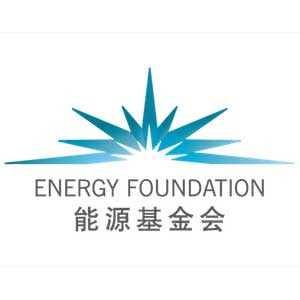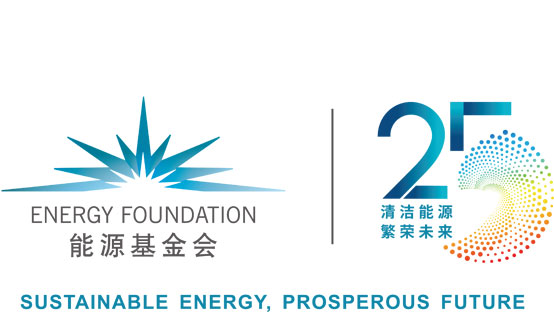Key to Building Livable and Sustainable Cities in China
Over the past 40 years, the people in China have watched their city roads getting wider and wider, with more and more motor vehicles running on them. Unfortunately, they also bore witness to the ballooning problems of traffic congestion and air pollution. Wang Zhigao, director of the Low Carbon Cities Program of Energy Foundation China, felt increasingly worried. “The car-oriented model of urban development and chaotic expansion have led to a variety of urban diseases. What people need is a livable place that is low carbon, prosperous, vibrant, and humane,” he said.

In the 21st century, China has experienced a rapid process of urbanization. According to the data from the country’s National Bureau of Statistics, from 2002 to 2011, China’s urban population grew by an average of 20.96 million people per year. And this has given rise to challenges with regard to the environment, transportation, energy, climate security, and people’s daily life.
Since 2008, Energy Foundation China has committed itself to helping China build “people-oriented” cities. And the key in doing so is to find out how to deal with air pollution, traffic congestion, and carbon emissions from transport. Through many trials and experiments, the foundation finally found a breakthrough point: “transit-oriented development” (TOD) as an urban development concept for China.
Introducing TOD to China
In the 1990s, Peter Calthorpe, a founder of the Chicago-based “Congress for the New Urbanism,” came up with the ideas of TOD for urban areas. The concept is about carrying out high-density hybrid development in an area with a radius of 400–800 meters and a 5–10 minute walk from the center of public transportation. It is characterized by the integration of office, business, entertainment, education, and residence into a highly accessible area. Since then, this concept has been widely used in urban development in the United States, Japan, Singapore, Hong Kong, and many other countries and regions. It has become an important method to solve the problems of modern urban development.
“People can comfortably meet their needs for daily life, shopping, entertainment, leisure, and work within walking distance in the TOD area. Multiple areas are connected through efficient systems of public transportation, which is also conducive to an improvement of the jobs-housing balance,” Mr. Wang said, “TOD’s success on an international scale has inspired us to take up this concept in China.”
In early 2010, as Kunming began exploring for ways to improve the planning and construction of the city’s new Chenggong district, Energy Foundation China invited Mr. Calthorpe to China. We asked him to provide support to the TOD concept plan in the central district of Chenggong covering 10 square kilometers. Eventually, Kunming adopted the plan and transformed it into an official document on urban planning for implementation in the area. “We have taken the lead in promoting the TOD concept and contributed valuable experiences at both the regional and the national level. I am deeply impressed by Energy Foundation China for their enlightened ideals as well as their exceptional professionalism. Over the years, we have been through many trials and tribulations, but never wavered in carrying out TOD’s planning and design concepts. And the result clearly shows that our perseverance has been hugely beneficial to the city,” said Li Liang, former director of the Kunming Municipal Bureau of Planning.

The significance of the Chenggong Project cannot be overstated as it pioneered a new thinking over urban planning in China. When most cities in China were still building broad avenues and grand plazas, Chenggong New District practiced narrow streets, dense road network, and small block size while integrating other ideas, such as mixed land use and bus priority. The planning project of Chenggong New District has been highly regarded by China’s Ministry of Housing and Urban-Rural Development. Senior officials from the ministry spoke about and recommended case studies on the project at national conferences. The project was included in the first batch of six pilot projects of Green Eco-Cities in China, receiving 50 million RMB of funding from the central government.
Energy Foundation China also explored and promoted the design of streets and public spaces based on TOD principles and the people-oriented ideals of urban space.
“One of the 18 oddities of Chongqing, walking is faster than driving,” this outlandish colloquial saying is actually a true portrayal of the traffic situation of Chongqing, the hillside metropolis in Southwestern China. In 2009, Chongqing invited Energy Foundation China to provide support for the pre-study of the planning of the traffic system in the Yuzhong Peninsula of Chongqing with an emphasis on the pedestrian-dominated commuting of the city. In 2011, Chongqing selected a number of streets in Yuzhong District to carry out pilot projects, based on research proposals, in order to re-activate its “grey spaces,” increase the number of facilities that will enable people to communicate, move around, and take rest. The projects also sought to guide motor traffic and ensure pedestrian safety through intelligent designs of road markings. Upon completion of the projects, roads that favored motor vehicles and were difficult to navigate by pedestrians were transformed into streets with easy access to public transportation, rich culture, and intelligent spatial layout. The project won a top prize of the 2013 National Award for Urban and Rural Planning and Design. Since then, the city has also established similar projects in other districts.

Shanghai is another major Chinese metropolis that has benefited from works done by Energy Foundation China, which started its presence there in 2013. Since then, it has supported a range of design studies on streets and spaces. In 2016, the “Shanghai Guidelines on Street Design,” which received inputs from analysis and education supported by Energy Foundation China, was officially released. This is the first such guideline in China to systematically explore humanized design for urban street from the perspective of the “complete streets” approach and won a top prize of the 2017 National Award for Urban and Rural Planning and Design.
TOD Phenomenon Takes China by Storm
Since 2010, Energy Foundation China has also supported research and pilot projects in Jinan, Zhuhai, and Xiamen, as well as provinces of Jiangsu and Guangdong, helping various regions develop urban planning in line with TOD concepts and regional characteristics, thus prompting more and more cities to take up TOD pilot projects. And during this process, the progresses made in planning, design, and construction with regard to TOD attracted great attention at the national level.
In March 2014, China officially published its “National Plan for New Type of Urbanization (2014-2020),” which stated that, “The compact model with high density, functional mix, and transit-oriented features shall become the most accepted way for urban development.” This was the first time the central government explicitly proposed adopting the TOD model in an official document to guide China’s urban development toward a more compact and low carbon direction.
In December 2015, the Ministry of Housing and Urban-Rural Development officially published the “TOD Planning and Design Guidelines”—after Energy Foundation China supported the China Academy of Urban Planning and Design to conduct such a preliminary study in 2013—requiring cities to optimize functional layout and spatial structure for urban areas. By that time, dozens of Chinese cities were carrying out TOD-related projects. According to a rather conservative estimate, the implementation of the guidelines by Chinese cities will bring about reductions in carbon emissions to the tune of 130 million tons each year after 2030.

In February 2016, not long after a national conference on urban development, China issued a directive to strengthen the country’s oversight on urban planning and construction, requiring all urban development in the future to abide by the principles of smaller block sizes, dense road network, and sustainability, while giving priority to walking, cycling, and public transportation. Since then, this has accelerated the spread of the people-oriented TOD concept across the nation.
In the past 10 years, the TOD concept has blossomed and bore fruit both at the policy-making level and on the ground in China. Energy Foundation China has been engaged in dozens of pertinent studies, in order to provide analysis and education support to the development and revision of more than 20 national standards on urban planning and green transportation.
At the same time, the foundation has assisted in the training of hundreds of government employees every year since 2008. They are either leading officials or key technical personnel from local governments. Many of them learned and gradually accepted the TOD concept through the training.

Energy Foundation China has successfully married the TOD concept with local conditions in China. And through continuous refinement, we summed up the “ten principles” of people-oriented urban planning in China. We also helped the compilation and publication of “Emerald City.” Authored by Calthorpe Associates, the China Sustainable Transportation Center, and engineering firm Glumac, it is a practical manual book on the ways to implement these principles for urban planning in China. Since then, the World Bank has re-edited the book and translated it into four other languages for circulation around the world.
A True “People-Oriented” City
A city is a vessel with the people-oriented approach at its core. Although the concept of TOD has gained wide-spread acceptance and been put into practice in China, a true “people-oriented” city is also about seeking to meet a full range of people’s aspirations and demands for bettering their life with limited carbon emissions. “Considering China’s socio-economic development and urbanization are entering a new stage, we are faced with an aging population, uneven supply of basic public services, widening income gaps, and a growing middle class prone to more practices of high carbon consumption. In addition to meeting people’s ever increasing material needs, it is equally important to guide the society to build a low carbon lifestyle and consumption model. In this area, Energy Foundation China is committed to seeking an overarching low carbon solution based on the TOD concept. Our hope for the future is that cities in China can achieve comprehensive, coordinated, and high quality development with regard to economy, society, and the environment, and become a green, open, inclusive, and sustainable home for all of her people,” said Wang Zhigao.



